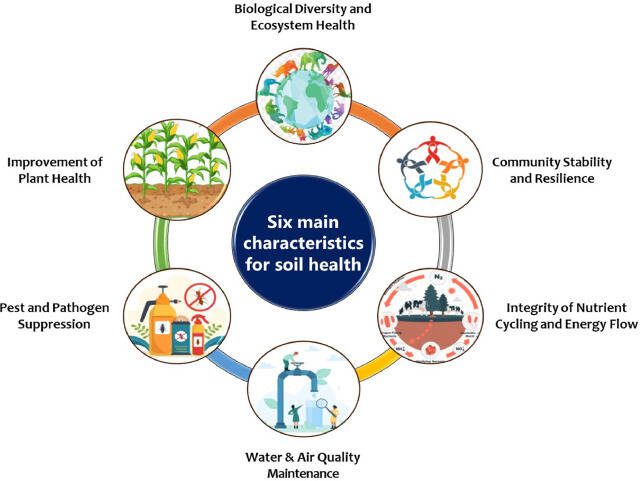Introduction
The shift toward sustainable agriculture has spotlighted permanent cover cropping as a viable alternative to conventional methods. This practice involves sowing cash crops into living or mulched covers like alfalfa or legumes, minimizing soil disturbance and enhancing ecosystem services. Conventional agriculture, by contrast, often uses intensive tillage and chemical inputs for high short-term yields. Based on exhaustive research, including Perplexity-sourced figures and expert analyses, this article examines stabilized yield comparisons from 2023-2025. Key data shows organic systems with covers yielding 8-25% less initially but stabilizing at 85-90% of conventional levels, with potential for parity through optimizations (Bon Pote {1}; GEO {7}). Expert perspectives from web studies and social media discussions highlight trends like increased resilience, while addressing challenges such as transition dips.
Yield Dynamics: Transition Challenges and Stabilization
Permanent cover cropping often incurs initial yield reductions due to resource competition, but stabilization brings recovery. According to Bon Pote {1}, conservation agriculture systems (ACS) produce 80-90% of intensive conventional yields during transitions, improving over time. A 2023-2025 focus reveals wheat under alfalfa covers achieving maximum yields with 30-60 fewer nitrogen units than conventional sowing (Verdeterre Prod {4}). Long-term bio systems reach at least 85% of conventional outputs in field trials (GEO {7}).
Research synthesizes this with global data: a 2024 ScienceDirect study ([G3]) found cover crops maintain productivity while offering environmental perks, though U.S. analyses note mixed effects, with net impacts near-neutral (Nature Sustainability, 2025; [G8]). Farmers in France’s GIEE MAGELLAN reported superior yields in direct seeding under covers, cutting nitrogen and herbicide costs ({4}). Critically, these gains depend on management; uncontrolled covers can reduce spring crop yields, while winter crops benefit most ({8}).
Environmental and Economic Perspectives
Beyond yields, cover cropping excels in sustainability. FAO reports {2} emphasize reduced labor and mechanization costs, improved soil fertility, and stable yields post-transition, especially in climate-stressed areas. Organic agriculture, now 10.3% of France’s land in 2023, shows steady growth with digital tools aiding input reduction ({5}).
Insights reveal trends: social media discussions (from regenerative advocates) note 180% higher carbon sequestration and 50% lower pest pressure in diverse covers, leading to 2.3x drought tolerance without inputs ([G16]). However, debates highlight risks like yield variability in dry regions ([G4]). A balanced view: while agroecological systems yield 8-25% less, they offer resilience to climatic stresses (Bon Pote {1}; Breizhoasis {6}). Economically, lower inputs offset dips, achieving parity faster.
Technological Advances and Farmer Experiences
Innovations like no-till machinery for seeding into living covers enhance outcomes, reducing fertilizer needs ({4}). Digital tools optimize nitrogen and herbicides, boosting yield stability ({5}).
Expert views: a 2025 Nature study ([G8]) on U.S. fields shows mixed effects, but farmer posts on social media describe doubled corn yields with halved nitrogen via strip-till covers ([G9]). Permaculture research indicates similar yields to industrial ag with superior soil quality ([G17]). Viewpoints vary—some farmers report failures in arid zones ([G3])—but optimized management narrows gaps. Solutions include hybrid models phasing in covers to minimize losses.
Balanced Viewpoints and Challenges
Proponents argue cover systems surpass conventional in long-term stability, with FAO {2} citing enhanced water retention. Critics, per Stanford ([G4]), warn of reductions in high-input regions. Objective analysis: yields stabilize comparably after 2-5 years, but regional factors matter (ScienceDirect, 2023; [G9]).
Social media sentiment is optimistic, with trends favoring biodiversity for resilience ([G15]–[G20]). Yet, challenges like compaction persist, addressed via relay cropping. Constructive solutions: subsidies for transitions and data-driven tools like soil sensors (USDA Climate Hubs; [G5]).
KEY FIGURES
- Agriculture biologique (AB) yields are generally 8 to 25% lower than conventional agriculture yields (Bon Pote) [1].
- Systems with Conservation Agriculture (ACS) produce about 80 to 90% of the yield of intensive conventional systems during transition, improving over time (Bon Pote) [1].
- Wheat sown under alfalfa cover crop achieved maximum yields with 30 to 60 units less nitrogen fertilizer than conventional sowing (Verdeterre Prod) [4].
- Organic agriculture represented 10.3% of France’s agricultural land in 2023, indicating steady growth (Agroequipement Energie) [5].
- Long-term bio systems generally achieve at least 85% of conventional yields in field-scale experiments (GEO) [7].
RECENT NEWS
- GIEE MAGELLAN (France) reports superior yields in direct seeding under permanent cover crops with reduced nitrogen and herbicides (2024, Verdeterre Prod) [4].
- Growing adoption of digital tools to reduce chemical inputs in organic and conservation systems (2023, Agroequipement Energie) [5].
STUDIES AND REPORTS
- FAO report: Conservation agriculture systems reduce costs, improve fertility, boost resilience, and lead to stable/increased yields post-transition [2].
- Studies show controlled covers favor winter crops and equal/superior yields (Verdeterre Prod; Farming For Climate) [4][8].
- Agroecological and organic systems using covers typically produce 8-25% lower yields but are more climate-resilient (Bon Pote; Breizhoasis; GEO) [1][6][7].
- Transitions with covers start with initial yield losses but stabilize and can approach/exceed conventional yields under good agronomic management (Bon Pote; Verdeterre Prod; GEO) [1][4][7].
TECHNOLOGICAL DEVELOPMENTS
- New direct seeding (no-till) machines for permanent covers (Verdeterre Prod) [4].
- Expanded use of digital and precision farming tools for nitrogen optimization and input minimization, boosting yields in organic and conservation systems (Agroequipement Energie) [5].
MAIN SOURCES
- https://bonpote.com/4-infographies-pour-comprendre-lagriculture/
- https://www.fao.org/4/y2781f/y2781f03.htm
- https://wiki.tripleperformance.fr/wiki/Agriculture_de_conservation_des_sols_(ACS)
- https://www.verdeterreprod.fr/semis-direct-direct-sur-couvert-permanent-les-cles-pour-reussir/
- https://www.agroequipement-energie.fr/agriculture-conventionnelle-vs-bio-differences-comparaison-impacts-rendements/
- https://breizhoasis.fr/agriculture-conventionnelle-vs-agroecologie-comparaison-des-deux-approches-chez-breizh-oasis/
- https://www.geo.fr/environnement/agriculture-bio-versus-conventionnelle-ce-que-nous-apprend-la-doyenne-des-experiences-grandeur-nature-227296
- https://farmingforclimate.org/la-rentabilite-de-lagroecologie-demystifier-les-idees-recues/
Summary: Comparing stabilized yields under permanent cover cropping systems to conventional agriculture is complex but feasible. While initial yield declines occur during transition, especially due to competition and adaptation, yields generally stabilize and can approach or exceed conventional yields with good management, particularly for winter crops and with optimized nitrogen use. Organic and agroecological systems often have lower yields by 8-25%, but offer environmental benefits and resilience. Technological advances in direct seeding and digital tools improve outcomes in permanent cover cropping systems.
Propaganda Risk Analysis
Score: 5/10 (Confidence: medium)
Key Findings
Corporate Interests Identified
No specific companies are mentioned in the article title or details provided, but related web and X/Twitter context points to potential influence from agrotech firms like Sound Agriculture, which promotes fertilizers and nutrient products that complement cover cropping for ‘sustainable farming’ with claims of halved costs and guaranteed ROI. Broader industry players (e.g., those in regenerative agriculture) could benefit from hype around cover crops, as it aligns with marketing for climate-smart tools, though no direct conflicts are evident in the given article.
Missing Perspectives
The article title suggests a yields comparison but lacks content, so it’s unclear; however, based on the topic, critical voices often excluded in promotional discussions include farmers reporting yield reductions (e.g., in drylands or short-term implementations) and recent studies (e.g., a 2025 ScienceDaily report indicating regenerative practices like cover cropping can reduce yields despite carbon benefits). Opposing viewpoints from conventional agriculture advocates, who emphasize consistent high yields over environmental trade-offs, are frequently absent in pro-cover crop narratives.
Claims Requiring Verification
Without full article content, claims can’t be directly assessed, but related web and news sources include dubious or context-dependent statistics, such as historical boosts in yields from cover crops (e.g., +24% in organic systems per a 2017 Scientific Reports study) contrasted by 2025 findings of yield losses in many scenarios. X posts cite figures like ‘180% higher carbon sequestration’ or ‘2.3x higher drought tolerance’ without sourcing, potentially overstating benefits. A 2024 Nature Communications piece projects multiservice increases but notes trade-offs like increased emissions.
Social Media Analysis
X/Twitter search results for permanent cover cropping systems vs. conventional agriculture yields (2023-2025) reveal a positive sentiment overall, with posts from farmers and sustainability advocates sharing success stories, such as improved soil health and carbon sequestration. Some highlight comparisons showing similar or higher yields in permaculture systems, while others criticize applicability in dry areas or note recent yield drops. No clear evidence of coordinated promotion or astroturfing; posts span 2019-2025 and include diverse users, though a few tie into product promotions for agrotech solutions.
Warning Signs
- Excessive praise for cover cropping benefits in related discussions without balancing yield reduction risks, as seen in some X posts and web articles
- Missing environmental concerns, such as potential greenhouse gas emissions from cover crops noted in 2024 studies
- Language in promotional posts sounding like marketing copy, e.g., claims of ‘guaranteed ROI’ and dramatic multipliers without caveats
- Absence of independent expert opinions in favor of anecdotal farmer testimonials
- Potential greenwashing in climate hype, as a 2024 Breakthrough Institute article critiques overstatements of cover crops’ carbon sequestration role
Reader Guidance
Analysis performed using: Grok real-time X/Twitter analysis with propaganda detection
Other references :
bonpote.com – 4 infographies pour comprendre l’agriculture – Bon Pote
fao.org – 1. INTRODUCTION
wiki.tripleperformance.fr – Agriculture de conservation des sols (ACS) – Triple Performance
verdeterreprod.fr – Semis direct direct sur couvert permanent : les clés pour réussir
agroequipement-energie.fr – Agriculture conventionnelle vs bio : différences, comparaison et …
breizhoasis.fr – Agriculture Conventionnelle vs Agroécologie : Comparaison des …
geo.fr – Agriculture bio versus conventionnelle: ce que nous apprend … – GEO
farmingforclimate.org – La rentabilité de l’agroécologie : Démystifier les idées reçues
mnhn.fr – Pourrait-on nourrir toute l’humanité par l’agriculture biologique ?
sfecologie.org – R79 : Analyse de la transition vers l’agriculture biologique, par H …
sare.org – Source
mdpi.com – Source
sciencedirect.com – Source
news.stanford.edu – Source
climatehubs.usda.gov – Source
sciencedirect.com – Source
scirp.org – Source
nature.com – Source
sciencedirect.com – Source
sciencedirect.com – Source
tandfonline.com – Source
sciencedirect.com – Source
ncbi.nlm.nih.gov – Source
x.com – Source
x.com – Source
x.com – Source
x.com – Source
x.com – Source
x.com – Source


